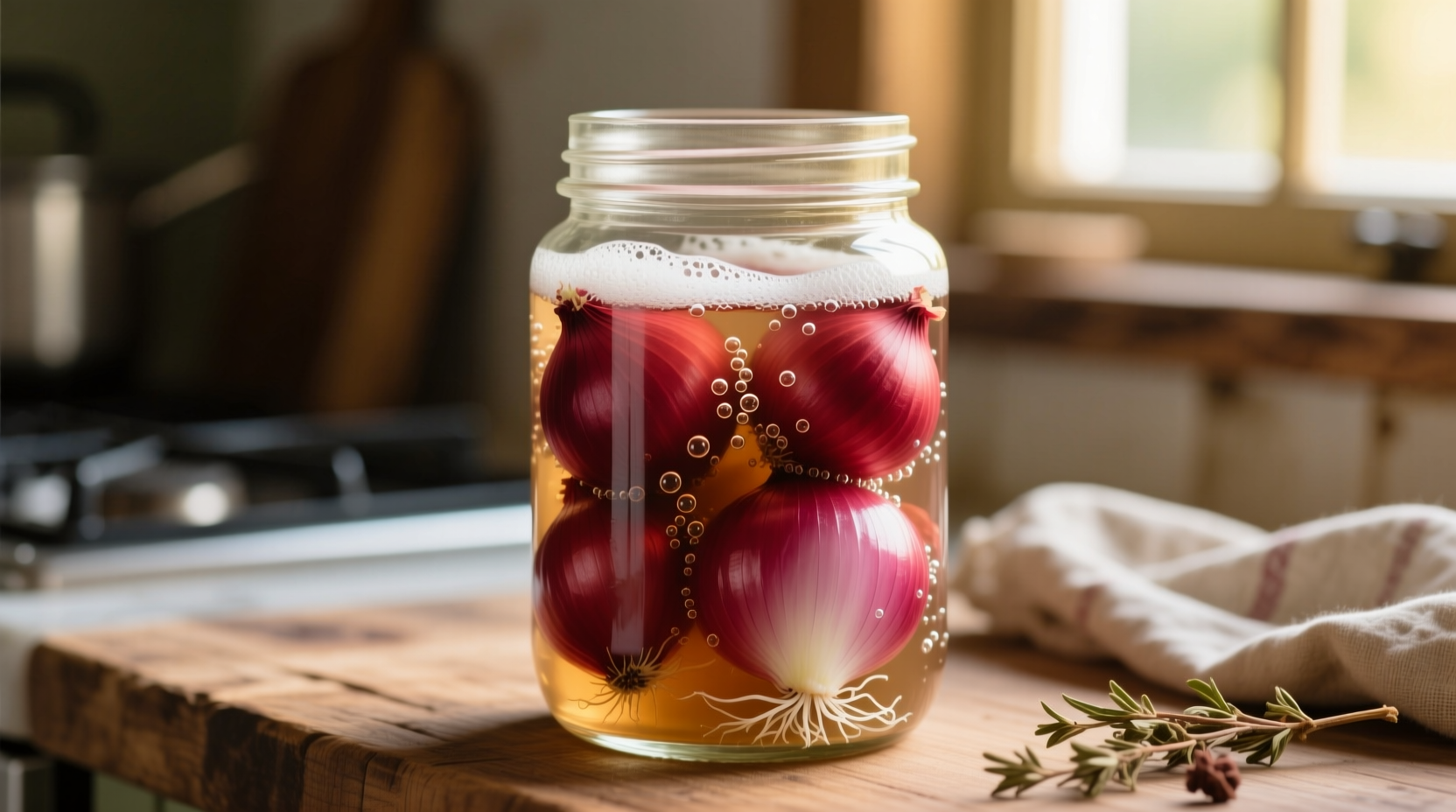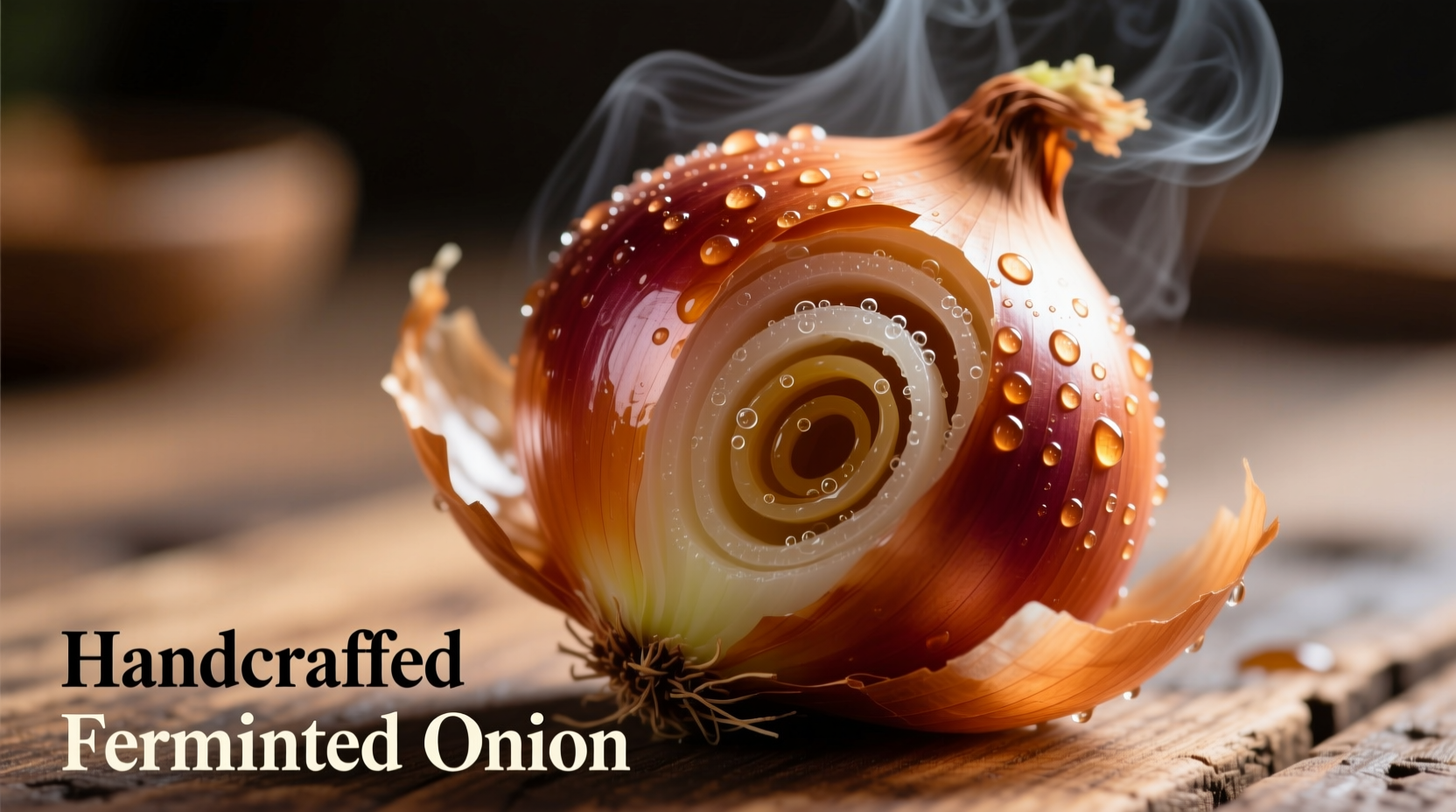Fermented onions transform ordinary alliums into tangy, probiotic-rich ingredients through lacto-fermentation. When prepared correctly with a 3-5% salt solution, they develop complex flavors while preserving beneficial bacteria that support gut health. The process takes 1-4 weeks at room temperature, creating a versatile condiment that lasts 6+ months refrigerated. Unlike pickled onions, fermented versions retain live cultures and develop deeper umami notes through natural bacterial action.
Ever wondered why chefs increasingly reach for fermented onions instead of their raw counterparts? This ancient preservation technique has surged in popularity for good reason. Fermented onions offer a unique flavor profile that elevates dishes while delivering science-backed health benefits. Let's explore how this simple process transforms ordinary kitchen staples into culinary gold.
The Transformation Behind Fermented Onions
When onions meet salt and time, magic happens. The natural bacteria on onion surfaces convert sugars into lactic acid through anaerobic fermentation. This process not only preserves the onions but creates new compounds that enhance both flavor and nutritional value. Unlike vinegar-based pickling, fermentation develops complex sourness with subtle sweetness and umami depth.
| Characteristic | Fermented Onions | Pickled Onions |
|---|---|---|
| Preservation Method | Natural bacterial fermentation | Vinegar acidity |
| Live Cultures | Yes (probiotic) | No |
| Flavor Development | Complex, evolving over time | Immediate, consistent |
| Nutritional Impact | Increased bioavailability | Limited change |
Why Ferment Onions? Science-Backed Benefits
Research from the National Center for Biotechnology Information confirms fermented foods enhance gut microbiome diversity. Onions already contain prebiotic fiber (inulin), which feeds beneficial bacteria. When fermented, they become a dual-action gut health booster—providing both prebiotics and probiotics.
The fermentation process also increases antioxidant availability. A 2019 Food Chemistry study demonstrated that fermented alliums show 20-30% higher antioxidant activity compared to raw onions. This means your body can access more health-promoting compounds.

Your Step-by-Step Fermentation Guide
Creating perfect fermented onions requires precision but minimal effort. Follow this professional-tested method:
- Prepare ingredients: Use 1 pound thinly sliced onions (red or yellow), 1.5-2.5 tablespoons non-iodized salt (3-5% salt ratio), optional flavor enhancers (garlic, peppercorns, bay leaves)
- Massage salt: Combine onions and salt in a bowl, massaging for 5-7 minutes until liquid releases
- Pack jar: Transfer to clean mason jar, pressing firmly to submerge onions in their liquid
- Weigh down: Use fermentation weight or small ziplock bag with brine to keep onions submerged
- Ferment: Cover with breathable cloth, store at 68-72°F (20-22°C) for 1-4 weeks
- Refrigerate: Once desired tanginess achieved, seal jar and refrigerate
Avoiding Common Fermentation Mistakes
Successful onion fermentation depends on proper technique. Key considerations:
- Submersion is critical: Any onion exposed to air may develop mold. Use weights to maintain full submersion.
- Temperature matters: Below 60°F slows fermentation; above 80°F risks undesirable bacteria. Ideal range: 68-72°F.
- Salt ratio precision: Too little salt invites spoilage; too much inhibits fermentation. Use kitchen scale for accuracy.
- Patience pays off: Minimum 7 days needed for proper flavor development, though 2-3 weeks yields best results.
Culinary Applications That Shine
Fermented onions add complexity to dishes where raw onions would overpower. Their mellow acidity works particularly well in:
- Tacos and burritos (replaces raw onion for better texture integration)
- Grain bowls (adds bright note without overwhelming other ingredients)
- Cheese plates (complements aged cheeses with its tangy-sweet profile)
- Salad dressings (blends beautifully with olive oil and herbs)
- Marinades (tenderizes proteins while adding depth)
Chef's tip: Reserve the flavorful brine for vinaigrettes or as a probiotic-rich addition to Bloody Marys.
Storage Guidelines and Shelf Life
Properly fermented onions maintain quality for 6-12 months refrigerated. Key storage practices:
- Always use clean utensils when serving to prevent contamination
- Keep onions submerged in brine at all times
- Store at consistent refrigerator temperature (34-40°F)
- Discard if mold appears on submerged portions (surface mold can be carefully removed)
Unlike canned goods, fermented foods continue evolving in flavor. Most people find peak flavor occurs between 2-4 months of refrigeration.
When Fermented Onions Aren't the Best Choice
While versatile, fermented onions have specific limitations:
- Raw applications: When crisp texture is essential (like onion rings), fresh works better
- High-heat cooking: Prolonged cooking destroys beneficial bacteria and diminishes unique flavor
- Sweet dishes: Their tanginess doesn't complement dessert applications
- Immediate use: When you need onions right now, fermentation requires planning
For best results, add fermented onions during the final stages of cooking or as a fresh garnish to preserve their distinctive qualities.











 浙公网安备
33010002000092号
浙公网安备
33010002000092号 浙B2-20120091-4
浙B2-20120091-4